- Home
- James Patterson
1st Case
1st Case Read online
The characters and events in this book are fictitious. Any similarity to real persons, living or dead, is coincidental and not intended by the author.
Copyright © 2020 by James Patterson
Excerpt from The Midwife Murders copyright © 2020 by James Patterson
Cover design by Anthony Morais
Cover image by Jason Peterson
Cover copyright © 2020 Hachette Book Group, Inc.
Hachette Book Group supports the right to free expression and the value of copyright. The purpose of copyright is to encourage writers and artists to produce the creative works that enrich our culture.
The scanning, uploading, and distribution of this book without permission is a theft of the author’s intellectual property. If you would like permission to use material from the book (other than for review purposes), please contact [email protected]. Thank you for your support of the author’s rights.
Little, Brown and Company
Hachette Book Group
1290 Avenue of the Americas, New York, NY 10104
littlebrown.com
facebook.com/littlebrownandcompany
twitter.com/littlebrown
First ebook edition: July 2020
Little, Brown and Company is a division of Hachette Book Group, Inc. The Little, Brown name and logo are trademarks of Hachette Book Group, Inc.
The publisher is not responsible for websites (or their content) that are not owned by the publisher.
The Hachette Speakers Bureau provides a wide range of authors for speaking events. To find out more, go to hachettespeakersbureau.com or call (866) 376-6591.
ISBN 978-0-316-41819-5
LCCN 2018947600
E3-20200610-DA-NF-ORI
Contents
Cover
Title Page
Copyright
Dedication
Chapter 1
Chapter 2
Chapter 3
Chapter 4
Chapter 5
Chapter 6
Chapter 7
Chapter 8
Chapter 9
Chapter 10
Chapter 11
Chapter 12
Chapter 13
Chapter 14
Chapter 15
Chapter 16
Chapter 17
Chapter 18
Chapter 19
Chapter 20
Chapter 21
Chapter 22
Chapter 23
Chapter 24
Chapter 25
Chapter 26
Chapter 27
Chapter 28
Chapter 29
Chapter 30
Chapter 31
Chapter 32
Chapter 33
Chapter 34
Chapter 35
Chapter 36
Chapter 37
Chapter 38
Chapter 39
Chapter 40
Chapter 41
Chapter 42
Chapter 43
Chapter 44
Chapter 45
Chapter 46
Chapter 47
Chapter 48
Chapter 49
Chapter 50
Chapter 51
Chapter 52
Chapter 53
Chapter 54
Chapter 55
Chapter 56
Chapter 57
Chapter 58
Chapter 59
Chapter 60
Chapter 61
Chapter 62
Chapter 63
Chapter 64
Chapter 65
Chapter 66
Chapter 67
Chapter 68
Chapter 69
Chapter 70
Chapter 71
Chapter 72
Chapter 73
Chapter 74
Chapter 75
Chapter 76
Chapter 77
Chapter 78
Chapter 79
Chapter 80
Chapter 81
Chapter 82
Chapter 83
Chapter 84
Chapter 85
Chapter 86
Chapter 87
Chapter 88
Chapter 89
Chapter 90
Chapter 91
Chapter 92
Chapter 93
Chapter 94
Chapter 95
Acknowledgments
Discover More James Patterson
An Excerpt from The Midwife Murders
About the Authors
Coming Soon
For Angela Hoot, of course
—JP
For Jonathan
—CT
What’s coming next from James Patterson?
Get on the list to find out about coming titles, deals, contests, appearances, and more!
The official James Patterson newsletter.
Chapter 1
Forensic Media Analysis Report
Case agent: William Keats, ASAC, FBI Field Office, Boston, MA
Evidence marker #43BX992
Media: iPhone 11, serial 0D45-34RR-8901-TS26, registered to victim, Gwen Petty
Recovered file: Unknown source mixed-media electronic message transcript. Source investigation pending.
I want to touch you. Your face, your skin, your thighs, your eyes. I want to feel you shiver as my hands explore every part of you.
I want to hear you. Your voice, whispering my name. Your breath in my ear. Your soft moan as I give you everything you want, and so much more.
I want to taste you. Your lips. Your kisses. Your beautiful flower, opening to my touch, my mouth, my tongue.
I want to take in the scent of you. I want to smell the perfume of your hair. The musk of your desire, bringing us closer, always closer.
More than anything, Gwen, I want to see you. Face to face. Body to body. I could pour my heart out with words forever, but words will never be enough.
It’s time we finally met, don’t you think?
Please say yes.
Chapter 2
THEY TOLD ME ahead of time to prepare myself for the dead bodies. But nobody told me how.
When I pulled up outside of 95 Geary Lane in Lincoln, all I knew was that a family of five had been killed and that I was supposed to report to Agent Keats for further instruction. Talk about jumping into the deep end, but hey, this was exactly the kind of assignment I’d been jonesing for. On paper, anyway. Real life, as it turns out, is a little more complicated than that.
“Can I help you?” a cop at the tape line on the sidewalk asked.
“I’m Angela Hoot,” I said.
“Good for you,” he said.
“Oh.” I’d forgotten to show him my new temporary credential. I held it up. “I’m with the FBI,” I said.
I could hardly believe the words coming out of my mouth. Me? With the FBI? Not something I ever saw coming, that was for sure. I certainly didn’t look the part, and I didn’t feel like I belonged there for a second.
Neither could the cop, apparently. He eyeballed me twice, once before he even looked at the ID, and once after. But that seemed to take care of it. He handed back my card, gave me an if-you-say-so kind of shrug, and lifted up the yellow tape to let me into the crime scene.
“Watch out for the smell,” he said. “It’s pretty bad in there.”
“Smell?” I said.
“You’ll see.”
It hit me on the porch steps, before I was even through the front door. I’d never been anywhere near a dead body, much less smelled one, but what else could that acrid nastiness be? A gag reflex pulsed in my throat. I switched to mouth breathing and fought the urge to run back to my safe little cubicle in Boston.
What was I doing here? I was a computer jockey, not some CSI wannabe.
Up until two hours ago, I’d been a lowly honors intern at the Bureau field office, focusing on cyberforensics. Clearly, I was here to look at some kind of digital evidence, but knowing that didn’t make it any less bizarre to walk into my first real crime scene.
The house was almost painfully ordinary, considering what I knew had gone down here just a few hours earlier. The living room was mostly empty. I saw all the expected furniture, the art on the walls, the fan of cooking magazines on a glass coffee table. Nothing at all looked out of place.
Most of the action was centered around the kitchen straight ahead. I’d noticed police officers stationed outside the house, but inside, it was all FBI. I saw blue ERT polo shirts for the Evidence Response Team, techs in white coveralls, and a handful of agents in business attire. Voices mingled in the air while I tried to get my bearings.
“No signs of a struggle,” someone said. “We’ve got some scuff marks here on the sill, and over by the table…”
“Looks like the back door was the point of entry. Must have shot this poor guy right through the window.”
“Yup.”
They all sounded like they were discussing the score of last night’s game, not a multiple homicide. It just added another dreamlike layer to the whole thing.
The lights were off in the kitchen, and one of the techs was using some kind of black light to illuminate spatters on the linoleum floor. It was blood, I realized, fluorescing in the dark. I could just make out a half empty glass of milk on the table, and a sheet-covered body on the floor, next to a tipped-over chair.
I was still standing in the doorway, silent until one of the bunny-suited techs brushed against me on his way out. I started to speak and had to clear my throat and try again, just to get the
words out.
“Excuse me. I’m looking for Agent Keats?” I said to him. Even then, my voice sounded so small, so unlike me. I wasn’t used to feeling this way, and I didn’t like it one bit.
“Sorry, don’t know who that is,” the guy said, and kept moving. Somehow, I’d expected for everything to make sense here, and that I would know what to do as I went along. Instead, I was left standing there with a growing sense that I’d been dropped off in the wrong nightmare.
“Hoot, up here!” I heard, and turned to see one of my supervisors, Billy Keats, at the top of the stairs. Thank God.
He hurried down to meet me. “You ready for this?” he said, handing me a pair of latex gloves matching the ones he was already wearing. I put them on. His demeanor was all business, and his face was grim.
“I’m okay,” I said.
“You don’t look it.”
“I’m okay,” I repeated, as much for myself as for him. If I said it enough, maybe it would come true. And maybe my stomach would stop folding in on itself, over and over, the way it had been doing since I’d arrived. “Where do you need me?”
“This way.” He led me up the carpeted stairs, briefing as we went. “We’ve got one of the victims’ cell phones in a Faraday bag. They’re just clearing the body now.”
The body. Some person who had been alive yesterday, now just “the body.”
But that other phrase—Faraday bag—was like a piece of driftwood, something I could latch on to in the middle of all this unfamiliarity. At least I knew what I was supposed to do with that. A Faraday bag blocks out any digital signals and preserves the device in question exactly as it was found until it can be forensically examined.
“Eventually, I’m going to want you to cover every machine in the house, but this phone is going to be your primary concern.”
We passed two open bedroom doors along the upstairs hall. I told myself to keep my eyes straight ahead, but they didn’t obey the impulse. Instead, I stole a glance into each room as we passed.
Through the first door, I saw something truly horrendous. A woman lay on her back on the king-size bed, eyes wide-open, with a small but unmistakable dark hole in her forehead. A halo of blood stained the pale-blue pillowcase under her hair. Outside of the few family wakes I’d been to, this was the first corpse I’d ever laid eyes on. The sight of it seemed to jump right into my long-term memory. No way I’d ever forget that moment, I knew right away.
As awful as that tiny moment had already been, it was the bunk beds in the next room that really split my heart down the middle. Each bunk held a covered body, draped with a white sheet. On the lower bunk, I could see one small hand sticking out, spiderwebbed with dark lines of dried blood, which had also pooled on the rug.
Jesus. This just got worse as it went along. The tightness from my stomach crawled up into my chest. I didn’t want to throw up anymore: now I wanted to cry. These poor, poor people.
“Hoot? We’re in here.” I looked over to see Keats already standing outside the last door on the hall. He stepped back to make way for two EMTs rolling out a gurney with a black zippered body bag on top. Beyond them, I could see what looked like a teenage girl’s room, with a floral comforter and an LSHS Warriors banner.
As I came closer and got a full look, one thing jumped out at me right away. I didn’t see any blood. Not like with the others.
“What’s her name?” I asked Keats, looking back at the gurney as they moved it down the hall. Somehow, I needed to know who she was.
“Gwen Petty,” Keats said. “Mother Elaine, father Royce, and twin brothers Jake and Michael. But if anyone in this family had information we can use, it’s going to be this girl.”
I only nodded. There were no words. Or maybe there were too many, racing around inside my head. It was hard to know anything right now.
“Come on, then,” Keats said. “Let’s get you to work.”
Chapter 3
“WHY ISN’T THERE any blood in here?” I asked as soon as we stepped into Gwen Petty’s bedroom.
I always ask a lot of questions, especially if I’m nervous. Facts are always reassuring. And if I didn’t know what I was doing, well, at least I could ask questions. Always that.
Keats ran a hand over his jaw like he was trying to decide how much to say.
“It looks like he shot the others, but our best guess in here is asphyxiation,” he said.
“Jesus.”
“Yeah. Whoever did this had strong feelings about Gwen, one way or another.”
I could feel some kind of empathetic tightness in my chest. Did that mean Gwen Petty had been strangled? Something else? What were her last moments like?
I couldn’t help the morbid thoughts cascading like lines of code through my mind. It was force of habit, in the worst possible way. So I tried to focus on the room instead—on what I could actually do.
I walked over to a built-in desk in the corner. A whole collage of photos was tucked into a crisscross of yellow ribbon on a gray fabric pin board. Another photo, framed on the desk, showed a family of five, smiling on the edge of what I guessed was the Grand Canyon. They all looked so happy.
“Is this them?” I asked.
“Yeah,” Keats said.
“How recent?”
“Not important,” he told me, and pointed at the Faraday bag on the floor by the bed. That meant Gwen’s phone had already been physically fingerprinted and sequestered. Now it was time for the geek squad, a.k.a. me. All things considered, I was grateful for the distraction and listened carefully as Agent Keats went over my instructions.
“I want to know who she’s been in contact with, what she’s deleted, what someone else might have deleted—everything,” Keats told me. “Specifically, I’m looking for texts or images that are romantic or sexual.”
I stuck my hands through the mesh sleeves that would give me access to the phone inside.
“What is it, do you know?” I asked. “iPhone? Android?”
“iPhone 11,” he said. “It was powered up when we got here.”
That told me where the port would be and what kind of cable I’d need to run a copy of the whole thing without altering any files. I dropped a connector cable into the bag, ran it through the exit port, and plugged it into the field kit I’d brought from the office.
One thing I’ll say for the FBI: they’ve got the best toys.
“Soon as you finish that, I want you in the mobile unit outside. Any other devices we find, we’ll bring to you. But this phone is your priority.”
“What’s the hurry on the phone?” I asked. I assumed it had something to do with the fact that Gwen Petty had died so differently than the rest of her family.
Instead of an answer, though, Keats only gave me a tight smile. “Listen, Angela. I know this is new for you, and I’m going to do my best to help you through,” he said. “Part of that is knowing your role and sticking to it. These questions are only wasting time, and from an investigative standpoint, the clock is always ticking. Got it?”
I got it, all right. I really did. This wasn’t about me, and I didn’t need Keats treating me with kid gloves, either. If anything, I appreciated that he didn’t.
I’d deal with the inhumanly sad thing that had happened here on my own time. Right now, the best thing I could do for Gwen Petty—and for that whole family—was to tighten my focus and IT the shit out of this assignment.
Chapter 4
IF ANYONE HAD told me five months earlier that I’d be collecting evidence at this hideous scene, I never would have believed them. But five months earlier, almost to the day, was when it all got set in motion.
The day I was kicked out of MIT.
There we were—me, my mom, and my two little sisters, packing me out of the graduate apartments in Ashdown House on Albany Street, where I was no longer a registered student, and therefore no longer welcome.
“Is this yours?” Mom asked, holding up a ratty old MIT crew T-shirt.
“No,” I said. “Leave it.”
I jammed shoes into a box alongside an algorithm design textbook, the world’s ugliest teddy bear, and a huge tangle of miscellaneous cables. I’m not the most organized person under the best of circumstances, much less as I was hurrying to get out from under the dark cloud that MIT—not to mention my mother—had hung over my head. I wanted to get away from there ASAP. I’d get myself organized when I unpacked later, at home.
“I don’t understand, Angela,” Mom said. “We’ve gone over it five times and I still don’t know what happened here. How is that even possible?”

 Miracle at Augusta
Miracle at Augusta The Store
The Store The Midnight Club
The Midnight Club The Witnesses
The Witnesses The 9th Judgment
The 9th Judgment Against Medical Advice
Against Medical Advice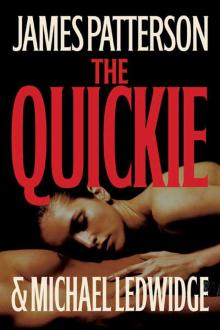 The Quickie
The Quickie Little Black Dress
Little Black Dress Private Oz
Private Oz Homeroom Diaries
Homeroom Diaries Gone
Gone Lifeguard
Lifeguard Kill Me if You Can
Kill Me if You Can Bullseye
Bullseye Confessions of a Murder Suspect
Confessions of a Murder Suspect Black Friday
Black Friday Manhunt
Manhunt Filthy Rich
Filthy Rich Step on a Crack
Step on a Crack Private
Private Private India
Private India Game Over
Game Over Private Sydney
Private Sydney The Murder House
The Murder House Mistress
Mistress I, Michael Bennett
I, Michael Bennett The Gift
The Gift The Postcard Killers
The Postcard Killers The Shut-In
The Shut-In The House Husband
The House Husband The Lost
The Lost I, Alex Cross
I, Alex Cross Going Bush
Going Bush 16th Seduction
16th Seduction The Jester
The Jester Along Came a Spider
Along Came a Spider The Lake House
The Lake House Four Blind Mice
Four Blind Mice Tick Tock
Tick Tock Private L.A.
Private L.A. Middle School, the Worst Years of My Life
Middle School, the Worst Years of My Life Cross Country
Cross Country The Final Warning
The Final Warning Word of Mouse
Word of Mouse Come and Get Us
Come and Get Us Sail
Sail I Funny TV: A Middle School Story
I Funny TV: A Middle School Story Private London
Private London Save Rafe!
Save Rafe! Swimsuit
Swimsuit Sam's Letters to Jennifer
Sam's Letters to Jennifer 3rd Degree
3rd Degree Double Cross
Double Cross Judge & Jury
Judge & Jury Kiss the Girls
Kiss the Girls Second Honeymoon
Second Honeymoon Guilty Wives
Guilty Wives 1st to Die
1st to Die NYPD Red 4
NYPD Red 4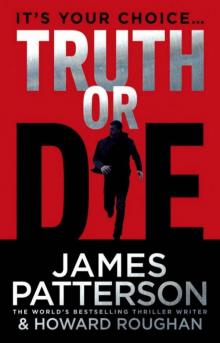 Truth or Die
Truth or Die Private Vegas
Private Vegas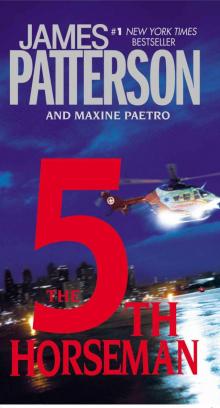 The 5th Horseman
The 5th Horseman 7th Heaven
7th Heaven I Even Funnier
I Even Funnier Cross My Heart
Cross My Heart Let’s Play Make-Believe
Let’s Play Make-Believe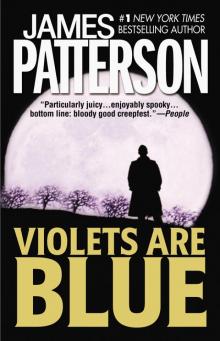 Violets Are Blue
Violets Are Blue Zoo
Zoo Home Sweet Murder
Home Sweet Murder The Private School Murders
The Private School Murders Alex Cross, Run
Alex Cross, Run Hunted: BookShots
Hunted: BookShots The Fire
The Fire Chase
Chase 14th Deadly Sin
14th Deadly Sin Bloody Valentine
Bloody Valentine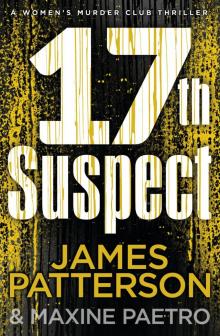 The 17th Suspect
The 17th Suspect The 8th Confession
The 8th Confession 4th of July
4th of July The Angel Experiment
The Angel Experiment Crazy House
Crazy House School's Out - Forever
School's Out - Forever Suzanne's Diary for Nicholas
Suzanne's Diary for Nicholas Cross Justice
Cross Justice Maximum Ride Forever
Maximum Ride Forever The Thomas Berryman Number
The Thomas Berryman Number Honeymoon
Honeymoon The Medical Examiner
The Medical Examiner Killer Chef
Killer Chef Private Princess
Private Princess Private Games
Private Games Burn
Burn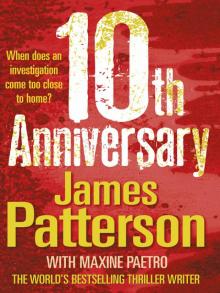 10th Anniversary
10th Anniversary I Totally Funniest: A Middle School Story
I Totally Funniest: A Middle School Story Taking the Titanic
Taking the Titanic The Lawyer Lifeguard
The Lawyer Lifeguard The 6th Target
The 6th Target Cross the Line
Cross the Line Alert
Alert Saving the World and Other Extreme Sports
Saving the World and Other Extreme Sports 1st Case
1st Case Unlucky 13
Unlucky 13 Haunted
Haunted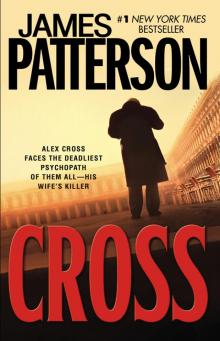 Cross
Cross Lost
Lost 11th Hour
11th Hour Bookshots Thriller Omnibus
Bookshots Thriller Omnibus Target: Alex Cross
Target: Alex Cross Hope to Die
Hope to Die The Noise
The Noise Worst Case
Worst Case Dog's Best Friend
Dog's Best Friend Nevermore: The Final Maximum Ride Adventure
Nevermore: The Final Maximum Ride Adventure I Funny: A Middle School Story
I Funny: A Middle School Story NYPD Red
NYPD Red Till Murder Do Us Part
Till Murder Do Us Part Black & Blue
Black & Blue Fang
Fang Liar Liar
Liar Liar The Inn
The Inn Sundays at Tiffany's
Sundays at Tiffany's Middle School: Escape to Australia
Middle School: Escape to Australia Cat and Mouse
Cat and Mouse Instinct
Instinct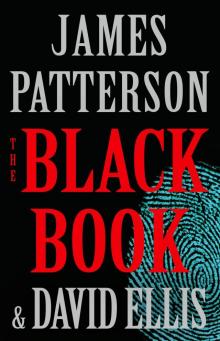 The Black Book
The Black Book London Bridges
London Bridges Toys
Toys The Last Days of John Lennon
The Last Days of John Lennon Roses Are Red
Roses Are Red Witch & Wizard
Witch & Wizard The Dolls
The Dolls The Christmas Wedding
The Christmas Wedding The River Murders
The River Murders The 18th Abduction
The 18th Abduction The 19th Christmas
The 19th Christmas Middle School: How I Got Lost in London
Middle School: How I Got Lost in London Just My Rotten Luck
Just My Rotten Luck Red Alert
Red Alert Walk in My Combat Boots
Walk in My Combat Boots Three Women Disappear
Three Women Disappear 21st Birthday
21st Birthday All-American Adventure
All-American Adventure Becoming Muhammad Ali
Becoming Muhammad Ali The Murder of an Angel
The Murder of an Angel The 13-Minute Murder
The 13-Minute Murder Rebels With a Cause
Rebels With a Cause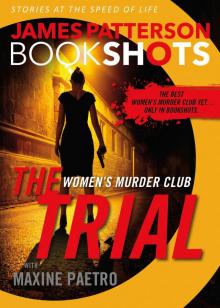 The Trial
The Trial Run for Your Life
Run for Your Life The House Next Door
The House Next Door NYPD Red 2
NYPD Red 2 Ali Cross
Ali Cross The Big Bad Wolf
The Big Bad Wolf Middle School: My Brother Is a Big, Fat Liar
Middle School: My Brother Is a Big, Fat Liar Private Paris
Private Paris Miracle on the 17th Green
Miracle on the 17th Green The People vs. Alex Cross
The People vs. Alex Cross The Beach House
The Beach House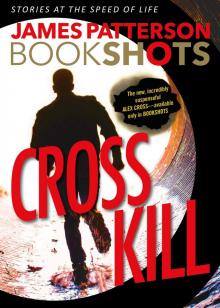 Cross Kill
Cross Kill Dog Diaries
Dog Diaries The President's Daughter
The President's Daughter Happy Howlidays
Happy Howlidays Detective Cross
Detective Cross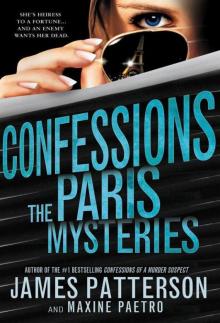 The Paris Mysteries
The Paris Mysteries Watch the Skies
Watch the Skies 113 Minutes
113 Minutes Alex Cross's Trial
Alex Cross's Trial NYPD Red 3
NYPD Red 3 Hush Hush
Hush Hush Now You See Her
Now You See Her Merry Christmas, Alex Cross
Merry Christmas, Alex Cross 2nd Chance
2nd Chance Private Royals
Private Royals Two From the Heart
Two From the Heart Max
Max I, Funny
I, Funny Blindside (Michael Bennett)
Blindside (Michael Bennett) Sophia, Princess Among Beasts
Sophia, Princess Among Beasts Armageddon
Armageddon Don't Blink
Don't Blink NYPD Red 6
NYPD Red 6 The First Lady
The First Lady Texas Outlaw
Texas Outlaw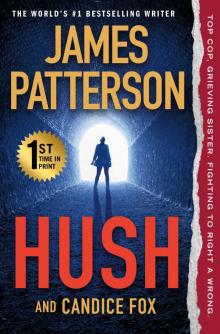 Hush
Hush Beach Road
Beach Road Private Berlin
Private Berlin The Family Lawyer
The Family Lawyer Jack & Jill
Jack & Jill The Midwife Murders
The Midwife Murders Middle School: Rafe's Aussie Adventure
Middle School: Rafe's Aussie Adventure The Murder of King Tut: The Plot to Kill the Child King
The Murder of King Tut: The Plot to Kill the Child King First Love
First Love The Dangerous Days of Daniel X
The Dangerous Days of Daniel X Hawk
Hawk Private Delhi
Private Delhi The 20th Victim
The 20th Victim The Shadow
The Shadow Katt vs. Dogg
Katt vs. Dogg The Palm Beach Murders
The Palm Beach Murders 2 Sisters Detective Agency
2 Sisters Detective Agency Humans, Bow Down
Humans, Bow Down You've Been Warned
You've Been Warned Cradle and All
Cradle and All 20th Victim: (Women’s Murder Club 20) (Women's Murder Club)
20th Victim: (Women’s Murder Club 20) (Women's Murder Club) Season of the Machete
Season of the Machete Woman of God
Woman of God Mary, Mary
Mary, Mary Blindside
Blindside Invisible
Invisible The Chef
The Chef Revenge
Revenge See How They Run
See How They Run Pop Goes the Weasel
Pop Goes the Weasel 15th Affair
15th Affair Middle School: Get Me Out of Here!
Middle School: Get Me Out of Here! Middle School: How I Survived Bullies, Broccoli, and Snake Hill
Middle School: How I Survived Bullies, Broccoli, and Snake Hill From Hero to Zero - Chris Tebbetts
From Hero to Zero - Chris Tebbetts G'day, America
G'day, America Max Einstein Saves the Future
Max Einstein Saves the Future The Cornwalls Are Gone
The Cornwalls Are Gone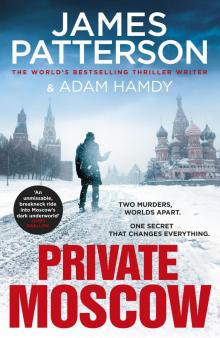 Private Moscow
Private Moscow Two Schools Out - Forever
Two Schools Out - Forever Hollywood 101
Hollywood 101 Deadly Cargo: BookShots
Deadly Cargo: BookShots 21st Birthday (Women's Murder Club)
21st Birthday (Women's Murder Club) The Sky Is Falling
The Sky Is Falling Cajun Justice
Cajun Justice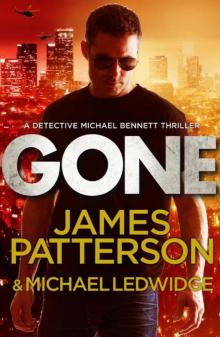 Bennett 06 - Gone
Bennett 06 - Gone The House of Kennedy
The House of Kennedy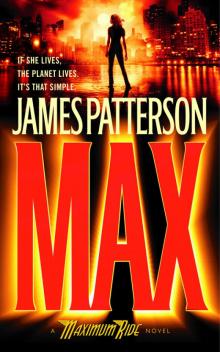 Waterwings
Waterwings Murder is Forever, Volume 2
Murder is Forever, Volume 2 Maximum Ride 02
Maximum Ride 02 Treasure Hunters--The Plunder Down Under
Treasure Hunters--The Plunder Down Under Private Royals: BookShots (A Private Thriller)
Private Royals: BookShots (A Private Thriller) After the End
After the End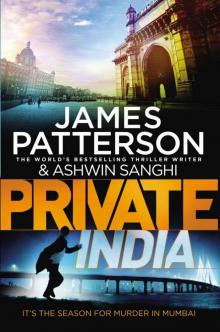 Private India: (Private 8)
Private India: (Private 8) Escape to Australia
Escape to Australia WMC - First to Die
WMC - First to Die Boys Will Be Boys
Boys Will Be Boys The Red Book
The Red Book 11th hour wmc-11
11th hour wmc-11 Hidden
Hidden You've Been Warned--Again
You've Been Warned--Again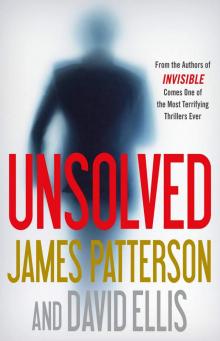 Unsolved
Unsolved Pottymouth and Stoopid
Pottymouth and Stoopid Hope to Die: (Alex Cross 22)
Hope to Die: (Alex Cross 22) The Moores Are Missing
The Moores Are Missing Black & Blue: BookShots (Detective Harriet Blue Series)
Black & Blue: BookShots (Detective Harriet Blue Series) Airport - Code Red: BookShots
Airport - Code Red: BookShots Kill or Be Killed
Kill or Be Killed School's Out--Forever
School's Out--Forever When the Wind Blows
When the Wind Blows Heist: BookShots
Heist: BookShots Murder of Innocence (Murder Is Forever)
Murder of Innocence (Murder Is Forever) Red Alert_An NYPD Red Mystery
Red Alert_An NYPD Red Mystery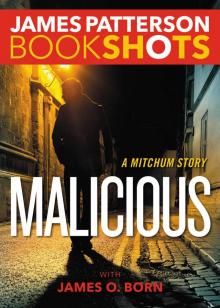 Malicious
Malicious Scott Free
Scott Free The Summer House
The Summer House French Kiss
French Kiss Treasure Hunters
Treasure Hunters Murder Is Forever, Volume 1
Murder Is Forever, Volume 1 Secret of the Forbidden City
Secret of the Forbidden City Cross the Line: (Alex Cross 24)
Cross the Line: (Alex Cross 24) Witch & Wizard: The Fire
Witch & Wizard: The Fire![Women's Murder Club [06] The 6th Target Read online](http://i1.bookreadfree.com/i/03/24/womens_murder_club_06_the_6th_target_preview.jpg) Women's Murder Club [06] The 6th Target
Women's Murder Club [06] The 6th Target Cross My Heart ac-21
Cross My Heart ac-21 Alex Cross’s Trial ак-15
Alex Cross’s Trial ак-15 Alex Cross 03 - Jack & Jill
Alex Cross 03 - Jack & Jill Liar Liar: (Harriet Blue 3) (Detective Harriet Blue Series)
Liar Liar: (Harriet Blue 3) (Detective Harriet Blue Series) Cross Country ак-14
Cross Country ак-14 Honeymoon h-1
Honeymoon h-1 Maximum Ride: The Angel Experiment
Maximum Ride: The Angel Experiment The Big Bad Wolf ак-9
The Big Bad Wolf ак-9 Dead Heat: BookShots (Book Shots)
Dead Heat: BookShots (Book Shots) Kill and Tell
Kill and Tell Avalanche
Avalanche Robot Revolution
Robot Revolution Public School Superhero
Public School Superhero 12th of Never
12th of Never Max: A Maximum Ride Novel
Max: A Maximum Ride Novel All-American Murder
All-American Murder Murder Games
Murder Games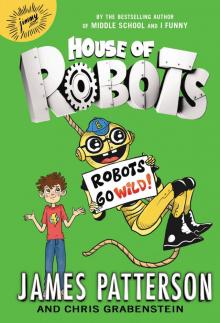 Robots Go Wild!
Robots Go Wild! My Life Is a Joke
My Life Is a Joke Private: Gold
Private: Gold Demons and Druids
Demons and Druids Jacky Ha-Ha
Jacky Ha-Ha Postcard killers
Postcard killers Princess: A Private Novel
Princess: A Private Novel Kill Alex Cross ac-18
Kill Alex Cross ac-18 12th of Never wmc-12
12th of Never wmc-12 The Murder of King Tut
The Murder of King Tut I Totally Funniest
I Totally Funniest Cross Fire ак-17
Cross Fire ак-17 Count to Ten
Count to Ten![Women's Murder Club [10] 10th Anniversary Read online](http://i1.bookreadfree.com/i1/03/30/womens_murder_club_10_10th_anniversary_preview.jpg) Women's Murder Club [10] 10th Anniversary
Women's Murder Club [10] 10th Anniversary![Women's Murder Club [01] 1st to Die Read online](http://i1.bookreadfree.com/i1/03/31/womens_murder_club_01_1st_to_die_preview.jpg) Women's Murder Club [01] 1st to Die
Women's Murder Club [01] 1st to Die I, Michael Bennett mb-5
I, Michael Bennett mb-5 Nooners
Nooners![Women's Murder Club [08] The 8th Confession Read online](http://i1.bookreadfree.com/i1/04/03/womens_murder_club_08_the_8th_confession_preview.jpg) Women's Murder Club [08] The 8th Confession
Women's Murder Club [08] The 8th Confession Private jm-1
Private jm-1 Treasure Hunters: Danger Down the Nile
Treasure Hunters: Danger Down the Nile Worst Case mb-3
Worst Case mb-3 Don’t Blink
Don’t Blink The Games
The Games The Medical Examiner: A Women's Murder Club Story
The Medical Examiner: A Women's Murder Club Story Black Market
Black Market Gone mb-6
Gone mb-6![Women's Murder Club [02] 2nd Chance Read online](http://i1.bookreadfree.com/i1/04/04/womens_murder_club_02_2nd_chance_preview.jpg) Women's Murder Club [02] 2nd Chance
Women's Murder Club [02] 2nd Chance French Twist
French Twist Kenny Wright
Kenny Wright Manhunt: A Michael Bennett Story
Manhunt: A Michael Bennett Story Cross Kill: An Alex Cross Story
Cross Kill: An Alex Cross Story Confessions of a Murder Suspect td-1
Confessions of a Murder Suspect td-1 Second Honeymoon h-2
Second Honeymoon h-2 Chase_A BookShot_A Michael Bennett Story
Chase_A BookShot_A Michael Bennett Story Confessions: The Paris Mysteries
Confessions: The Paris Mysteries![Women's Murder Club [09] The 9th Judgment Read online](http://i1.bookreadfree.com/i2/04/08/womens_murder_club_09_the_9th_judgment_preview.jpg) Women's Murder Club [09] The 9th Judgment
Women's Murder Club [09] The 9th Judgment Absolute Zero
Absolute Zero Nevermore: The Final Maximum Ride Adventure mr-8
Nevermore: The Final Maximum Ride Adventure mr-8 Angel: A Maximum Ride Novel mr-7
Angel: A Maximum Ride Novel mr-7 Juror #3
Juror #3 Million-Dollar Mess Down Under
Million-Dollar Mess Down Under The Verdict: BookShots (A Jon Roscoe Thriller)
The Verdict: BookShots (A Jon Roscoe Thriller) The President Is Missing: A Novel
The President Is Missing: A Novel![Women's Murder Club [04] 4th of July Read online](http://i1.bookreadfree.com/i2/04/06/womens_murder_club_04_4th_of_july_preview.jpg) Women's Murder Club [04] 4th of July
Women's Murder Club [04] 4th of July The Hostage: BookShots (Hotel Series)
The Hostage: BookShots (Hotel Series) $10,000,000 Marriage Proposal
$10,000,000 Marriage Proposal Diary of a Succubus
Diary of a Succubus Unbelievably Boring Bart
Unbelievably Boring Bart Angel: A Maximum Ride Novel
Angel: A Maximum Ride Novel Stingrays
Stingrays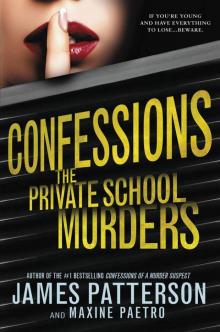 Confessions: The Private School Murders
Confessions: The Private School Murders Stealing Gulfstreams
Stealing Gulfstreams![Women's Murder Club [05] The 5th Horseman Read online](http://i1.bookreadfree.com/i2/04/05/womens_murder_club_05_the_5th_horseman_preview.jpg) Women's Murder Club [05] The 5th Horseman
Women's Murder Club [05] The 5th Horseman Zoo 2
Zoo 2 Jack Morgan 02 - Private London
Jack Morgan 02 - Private London Treasure Hunters--Quest for the City of Gold
Treasure Hunters--Quest for the City of Gold The Christmas Mystery
The Christmas Mystery Murder in Paradise
Murder in Paradise Kidnapped: BookShots (A Jon Roscoe Thriller)
Kidnapped: BookShots (A Jon Roscoe Thriller)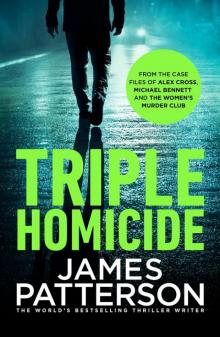 Triple Homicide_Thrillers
Triple Homicide_Thrillers 16th Seduction: (Women’s Murder Club 16) (Women's Murder Club)
16th Seduction: (Women’s Murder Club 16) (Women's Murder Club) 14th Deadly Sin: (Women’s Murder Club 14)
14th Deadly Sin: (Women’s Murder Club 14) Texas Ranger
Texas Ranger Witch & Wizard 04 - The Kiss
Witch & Wizard 04 - The Kiss![Women's Murder Club [03] 3rd Degree Read online](http://i1.bookreadfree.com/i2/04/12/womens_murder_club_03_3rd_degree_preview.jpg) Women's Murder Club [03] 3rd Degree
Women's Murder Club [03] 3rd Degree Break Point: BookShots
Break Point: BookShots Alex Cross 04 - Cat & Mouse
Alex Cross 04 - Cat & Mouse Maximum Ride
Maximum Ride Fifty Fifty: (Harriet Blue 2) (Detective Harriet Blue Series)
Fifty Fifty: (Harriet Blue 2) (Detective Harriet Blue Series) Alex Cross 02 - Kiss the Girls
Alex Cross 02 - Kiss the Girls The President Is Missing
The President Is Missing Hunted
Hunted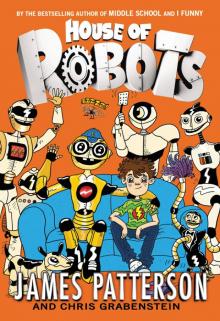 House of Robots
House of Robots Dangerous Days of Daniel X
Dangerous Days of Daniel X Tick Tock mb-4
Tick Tock mb-4 10th Anniversary wmc-10
10th Anniversary wmc-10 The Exile
The Exile Private Games-Jack Morgan 4 jm-4
Private Games-Jack Morgan 4 jm-4 Burn: (Michael Bennett 7)
Burn: (Michael Bennett 7) Laugh Out Loud
Laugh Out Loud The People vs. Alex Cross: (Alex Cross 25)
The People vs. Alex Cross: (Alex Cross 25) Peril at the Top of the World
Peril at the Top of the World I Funny TV
I Funny TV Merry Christmas, Alex Cross ac-19
Merry Christmas, Alex Cross ac-19 #1 Suspect jm-3
#1 Suspect jm-3 Fang: A Maximum Ride Novel
Fang: A Maximum Ride Novel![Women's Murder Club [07] 7th Heaven Read online](http://i1.bookreadfree.com/i2/04/13/womens_murder_club_07_7th_heaven_preview.jpg) Women's Murder Club [07] 7th Heaven
Women's Murder Club [07] 7th Heaven The End
The End